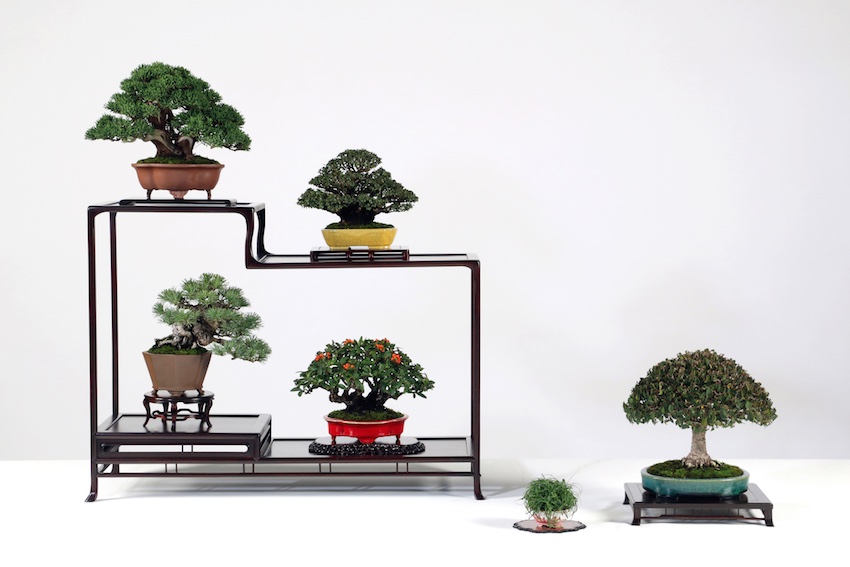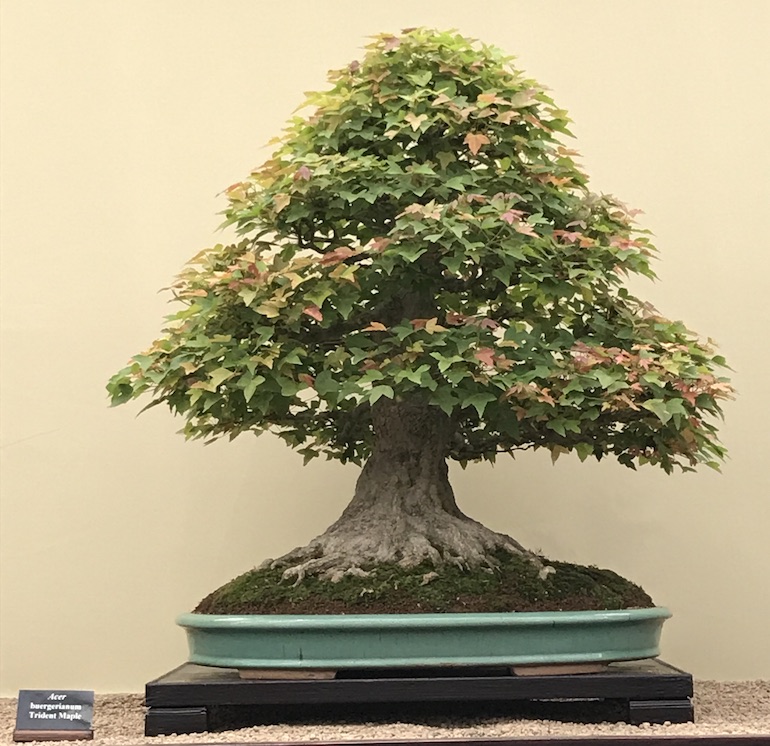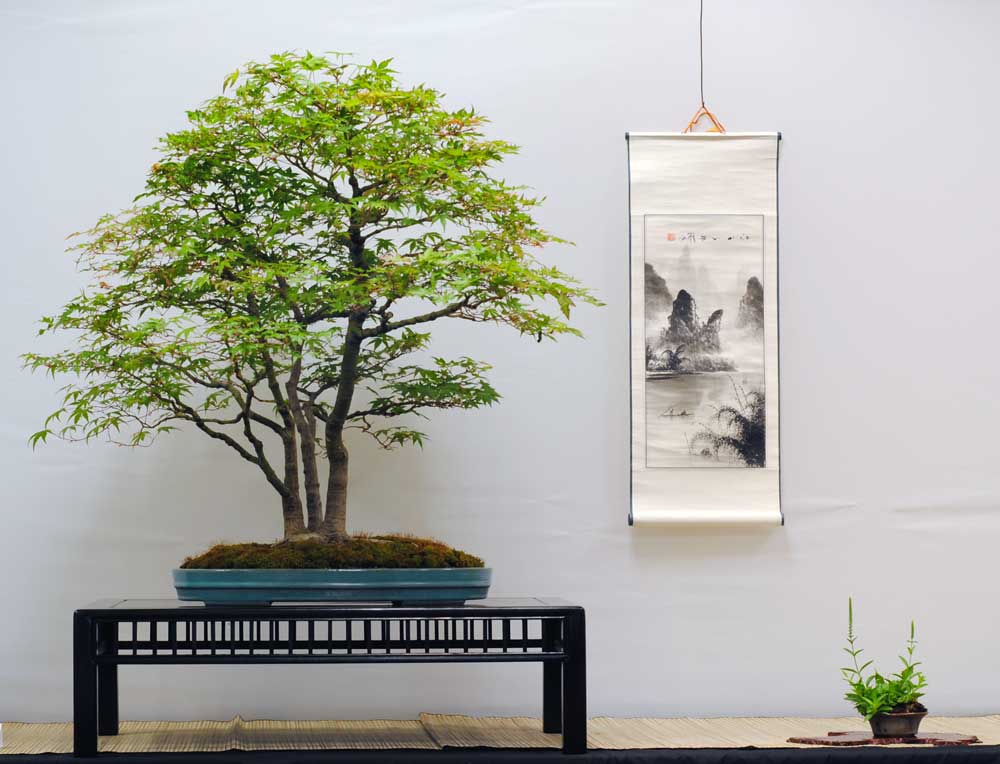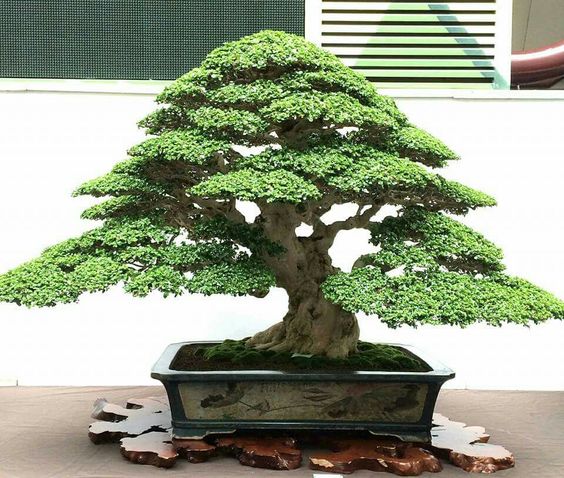
Understanding the terminology of bonsai can help you from getting lost when trying to understand more advanced discussions.
Terminology:

- Air-Layering – a technique to create roots at a new part of the tree. This is used as a propagation method and used to replace the existing root system.
- Akadama – a Japanese native soil that allows roots to penetrate and grow through the particles
- Apex – the highest point of a tree that can include a single branch or a small group of branches
- Apical – most vigorous growth produced by a tree that is typically at the end of a branch or at the upper canopy.
- Back Budding – a technique to encourage growth further back along the branch or trunk by pruning the apical growth.
- Bud Break – the point at which the bud has opened enough to show a green tip.
- Branches (Primary, Secondary, Tertiary) – Primary branches grow directly from the trunk; Secondary branches grow directly from the Primary branches; Tertiary branches grow directly from the Secondary branches.
- Broad-leafed Evergreen – Trees with leaves that are broad that do not change color and fall off during Autumn.
- Conifer – Trees with needles or scale-like foliage that are evergreen.
- Bud – organ or shoot containing an embryonic branch, leaf or flower.
- Cambium – green growth tissue directly below the bark; it’s increase adds to the girth of roots and stems.
- Callous – tissue that forms over a wound on a branch or trunk as part of the healing process.
- Candle – name given to the extending bud of a Pine tree before the new needles open.
- Chop – heavy pruning and height reduction of the tree trunk.
- Deadwood – a special technique used to create deadwood on a Bonsai which enhances the character of and, ages the appearance of a tree.
- Deciduous – broad-leaved trees which harden off and shed their leaves in the Autumn followed by dormancy during the Winter.
- Defoliation – removal of all or most of a tree’s leaves to reduce leaf size and vigor of growth.

- Die Back – death of growth beginning at the tip due to disease or injury.
- Evergreen – a plant that remains in leaf year round, slowly shedding old leaves while being replaced by new growth.
- Form – the main direction in which the trunk of a tree grows.
- Graft – a technique used to meld or attach a branch to the stump of a tree.
- Internode – the section of growth between two nodes (leaves or leaf-joints).
- Jin – removal of bark on a branch to create deadwood.
- Mame – Bonsai trees less than 6″/15 cm in height.
- Nebari – the flare of the roots that sometimes creates a mound.
- Node – growth point on a branch or trunk from which leaves, leaf-buds and shoots can appear.
- Petiole – the stalk of a leaf that attaches the leaf to the branch.
- Phloem – a layer of the branch that is used to transport fluids and nutrients
- Pre-Bonsai – a young tree that has not yet been trained.
 Pruning – most important method in training a Bonsai by trimming leaves and/or branches.
Pruning – most important method in training a Bonsai by trimming leaves and/or branches.- Ramification – repeated division of branches into secondary branches by means of pruning.
- Seasonal Bonsai – a species that look their best for only a short time when in flower or fruit.
- Shari – technique used to create deadwood on trunk.
- Shohin – name given to Bonsai less than 18″/45 cm in height.
- Soil – the growing medium used for Bonsai. Typically made of mostly inorganic substrates
- Sphagnum Moss – general name given to a long fibred moss used as an organic soil component for Bonsai and air-layering; has a great ability to absorb and hold moisture.
- Style – the way in which a Bonsai has been shaped in order to compliment the form (direction) of the trunk.
- Substrate – the growing medium in which a plant grows.
- Terminal – apical; outermost tip.
- Terminal Bud – a bud formed at the tip of a stem, twig or branchlet.
- Trunk Leader – uppermost branch on a previously cut off trunk that is trained to grow vertically as an extension of that trunk.
- Wiring – a technique using wire to bend a branch or trunk in a certain direction thus training it to grow in that way.
- Xylem – area below the cambium layer in a trunk.
- Yamadori – material collected from the wild.


 Pruning – most important method in training a Bonsai by trimming leaves and/or branches.
Pruning – most important method in training a Bonsai by trimming leaves and/or branches.